KEY TAKEAWAYS: INDIAN CINEMA AND ITS NOTION
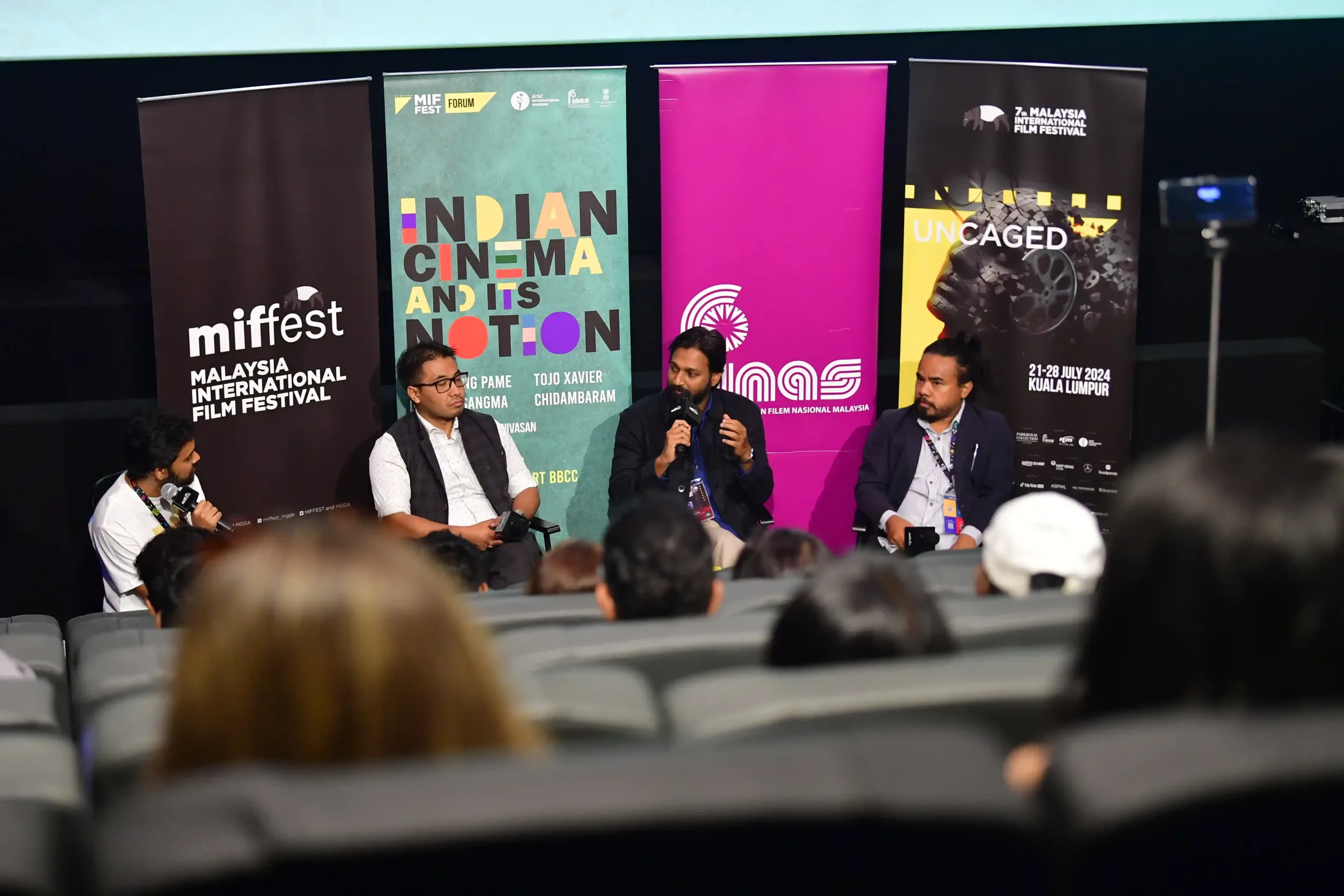
Lena Srinivasan, Armstrong Pame, Tojo Xavier and Dominic Sangma.
SPEAKER(S)
Armstrong Pame
Mr. Armstrong Pame, Director (Films) at India’s Ministry of Information and Broadcasting, is a 2009 batch IAS officer from Manipur’s Zeme Naga tribe. Known as the “Miracle Man” for building a 100 km road in a remote area through crowdfunding, he has received awards like India’s Most Eminent IAS Officer (2015) and Distinguished IAS Officer (2021). A graduate in Physics (Hons.) from St. Stephen’s College, he completed leadership courses at Oxford and Harvard, and was named a Young Global Leader by the World Economic Forum in 2018.
Tojo Xavier
Tojo Xavier began his professional career as a camera assistant, where he gained invaluable experience working on a variety of film sets. His dedication, attention to detail, and natural talent quickly earned him recognition in the industry. Tojo’s big break came when he was given the opportunity to work as a director of photography on an independent film project. The film received critical acclaim for its stunning visuals, establishing Tojo as a rising star in the world of cinematography.
Dominic Sangma
Dominic Sangma is an acclaimed Indian filmmaker from Meghalaya, known for his powerful storytelling. A graduate of the Satyajit Ray Film & Television Institute, he founded Anna Films and co-founded the Kelvin Cinema Festival. His latest film, “Rapture,” premiered at the Locarno Film Festival and explores themes of fear, superstition, and religion in a remote Garo village. The film has received international acclaim for its atmospheric and symbolic narrative
Chidambaram
Chidambaram is an Indian film director and screenwriter known for his work in Malayalam cinema. His latest film, “Manjummel Boys,” has achieved significant success, becoming the highest worldwide grosser from the Malayalam film industry. The film, a survival thriller based on a real-life incident, follows a group of friends on a desperate rescue mission in the Guna Caves. “Manjummel Boys” features an ensemble cast including Soubin Shahir, Sreenath Bhasi, Balu Varghese, and Ganapathi S. Poduval.
MODERATOR
Lena Srinivasan
Lena Srinivasan, originally an island boy from Penang, led a nomadic life that took him from Perth, where he studied documentary filmmaking, to the London Film School, where he earned his MA in Filmmaking. His career in the Indian film industry at Chennai involved working on commercials and feature films, before eventually settling in Kuala Lumpur, where he currently creates short films and serves as an assistant director on notable Malaysian features, including Shanjey Kumar Perumal’s Fire on Water and Macai.
Indian cinema has always been a dominant force in global entertainment, with Bollywood taking the centre stage for decades. However, beyond the glitzy Bollywood musicals and star-driven narratives lies an increasingly significant force—regional Indian cinema. Representing the vast diversity of India’s languages, cultures, and traditions, regional cinema has been carving out its own space, gaining both national and international recognition. In a recent forum discussion about Indian cinema’s future, filmmakers and industry insiders delved into the shifting dynamics of this cinematic world.
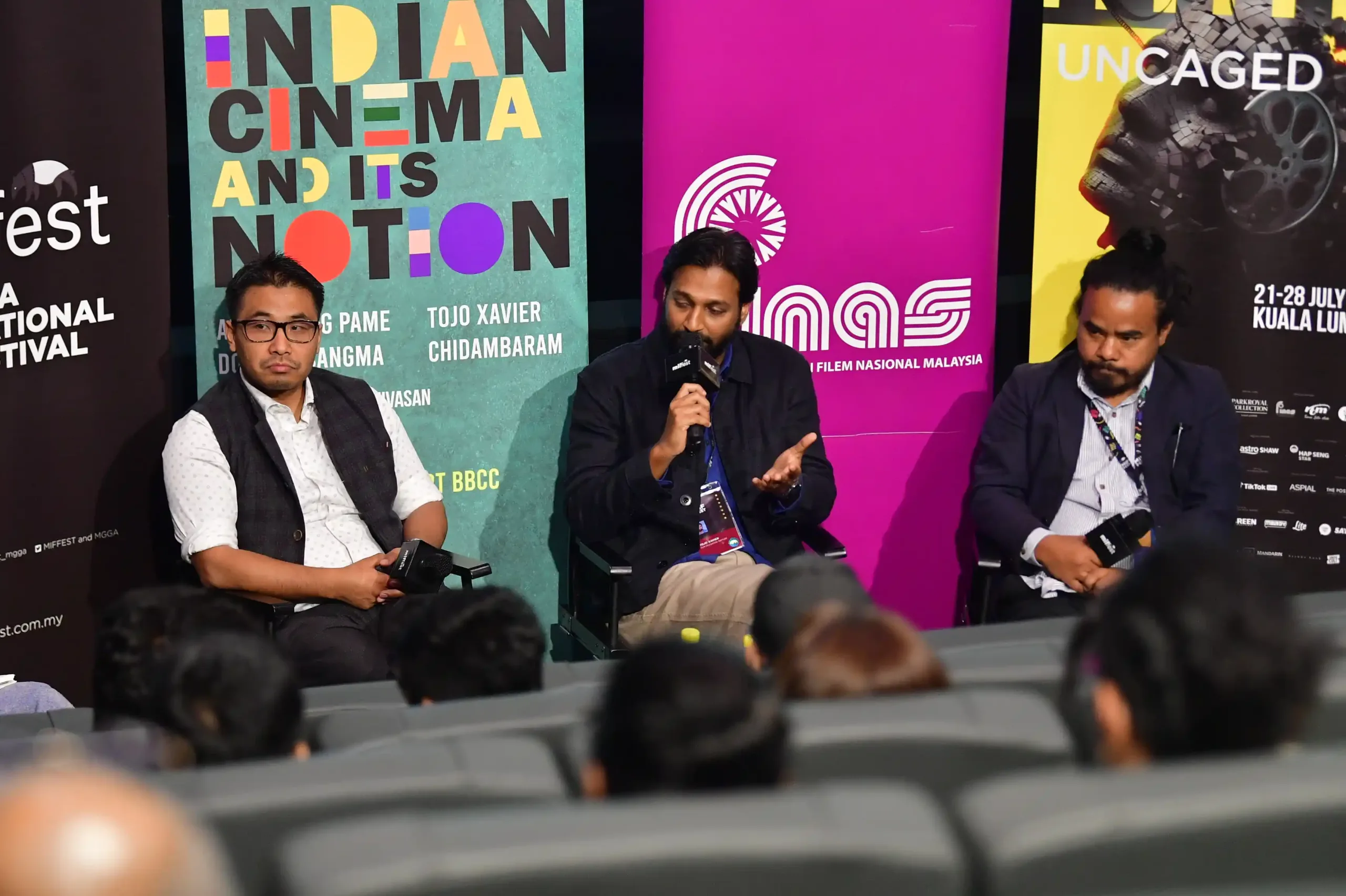
Armstrong Pame, Tojo Xavier and Dominic Sangma.
The Rich Tapestry of Regional Cinema
India’s cinematic landscape is as diverse as its geography. While Bollywood may have dominated historically, regional cinema—films produced in languages like Tamil, Telugu, Malayalam, Kannada, Marathi, Bengali, and Assamese—has steadily gained prominence. These films often tell stories rooted deeply in local cultures, offering audiences a more nuanced and authentic representation of life in various parts of India.
One key takeaway from the discussion was the historical presence of regional cinema, especially in countries with large Indian diasporas, such as Malaysia. Tamil and Hindi films have long been screened in Malaysia, but the filmmakers agreed that it’s time to expose audiences to a wider variety of regional Indian films.
Blurring the Lines Between Bollywood and Regional Cinema
In recent years, the lines between Bollywood and regional cinema have blurred significantly. With filmmakers like Mani Ratnam and S.S. Rajamouli produces films that transcend regional boundaries, the distinction between Bollywood and regional cinema is becoming increasingly irrelevant. Armstrong Pame humorously noted that Bollywood might now be considered a regional industry itself, given the overwhelming success of films from the South Indian film industries, which have started generating the bulk of India’s box office revenue.
Films like “Baahubali: The Beginning” and “RRR” have shown the immense potential of regional cinema to cross linguistic and cultural barriers, attracting international audiences. In many ways, the rise of these films reflects the growing democratisation of Indian cinema, where storytelling, rather than language, is the primary focus.
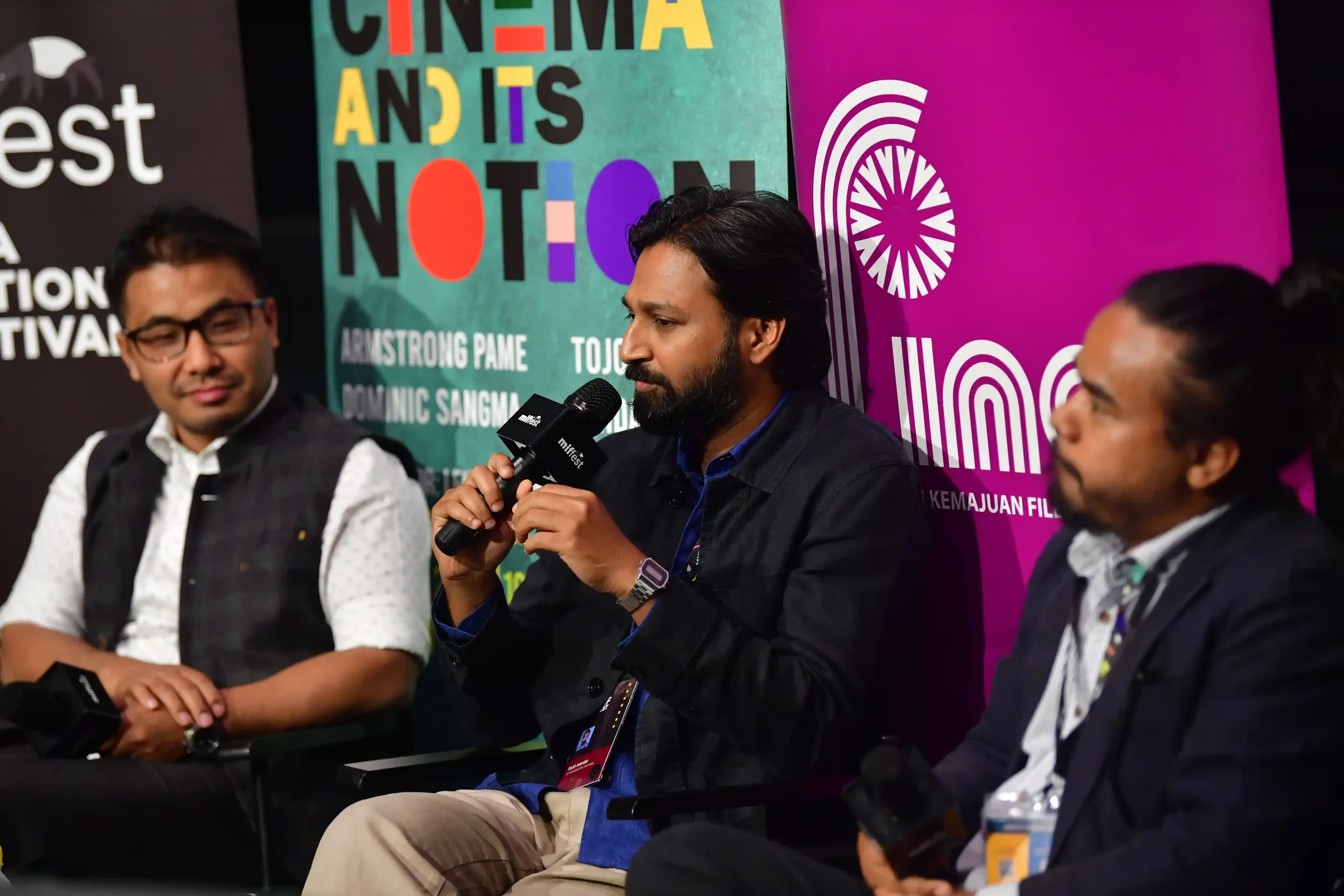
Armstrong Pame, Tojo Xavier and Dominic Sangma.
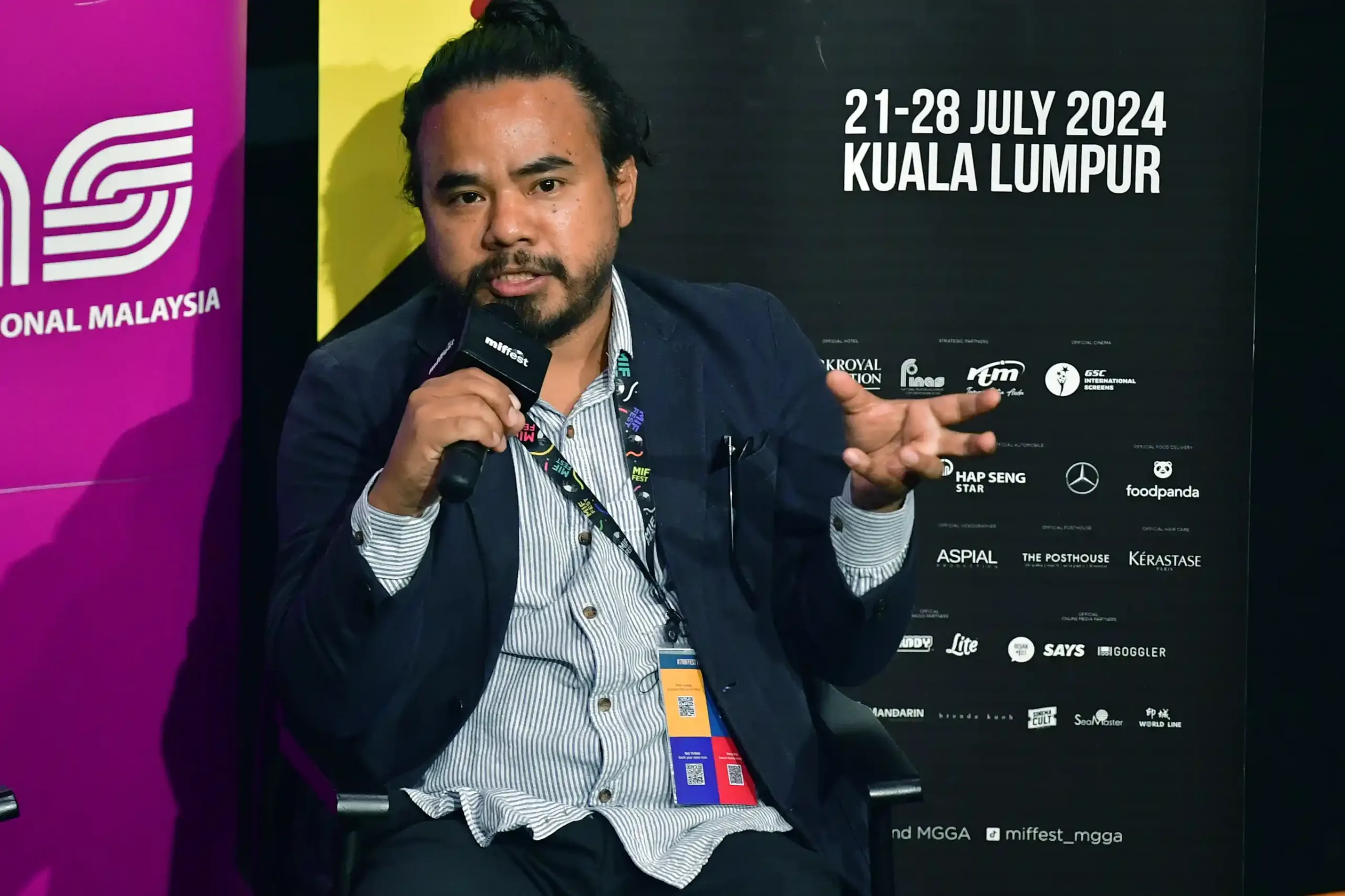
Dominic Sangma.
Challenges and Opportunities for Regional Cinema
Despite its growing popularity, regional cinema still faces hurdles, particularly in terms of infrastructure and distribution. For instance, filmmakers from the Garo region of Meghalaya, a remote part of Northeast India, lamented the lack of theatres in their home regions. For them, releasing a film like “Rapture” —the first feature film made in the Garo language—meant overcoming significant logistical challenges.
However, thanks to international co-productions and collaborations with countries like Switzerland, France, and the Netherlands, smaller regional films are now gaining a platform. These films often find success on the festival circuit, which in turn helps them get picked up by global distributors. For example, “Rapture” was released in French theatres and recognized at prestigious festivals like Locarno and Busan, something unimaginable for films from such remote regions of India in the past.
The Digital Revolution and the Future of Indian Cinema
Another important factor driving the success of regional cinema is the advent of digital platforms. Streaming services like Netflix, Amazon Prime, and homegrown Indian platforms like Zee5 have opened up new avenues for filmmakers. These platforms are making it easier for regional films to reach broader audiences, both within India and internationally.
Although the primary focus of these platforms remains commercial films, international recognition often forces them to pick up indie gems for their libraries. This trend, while still growing, is helping regional films receive much-deserved attention.
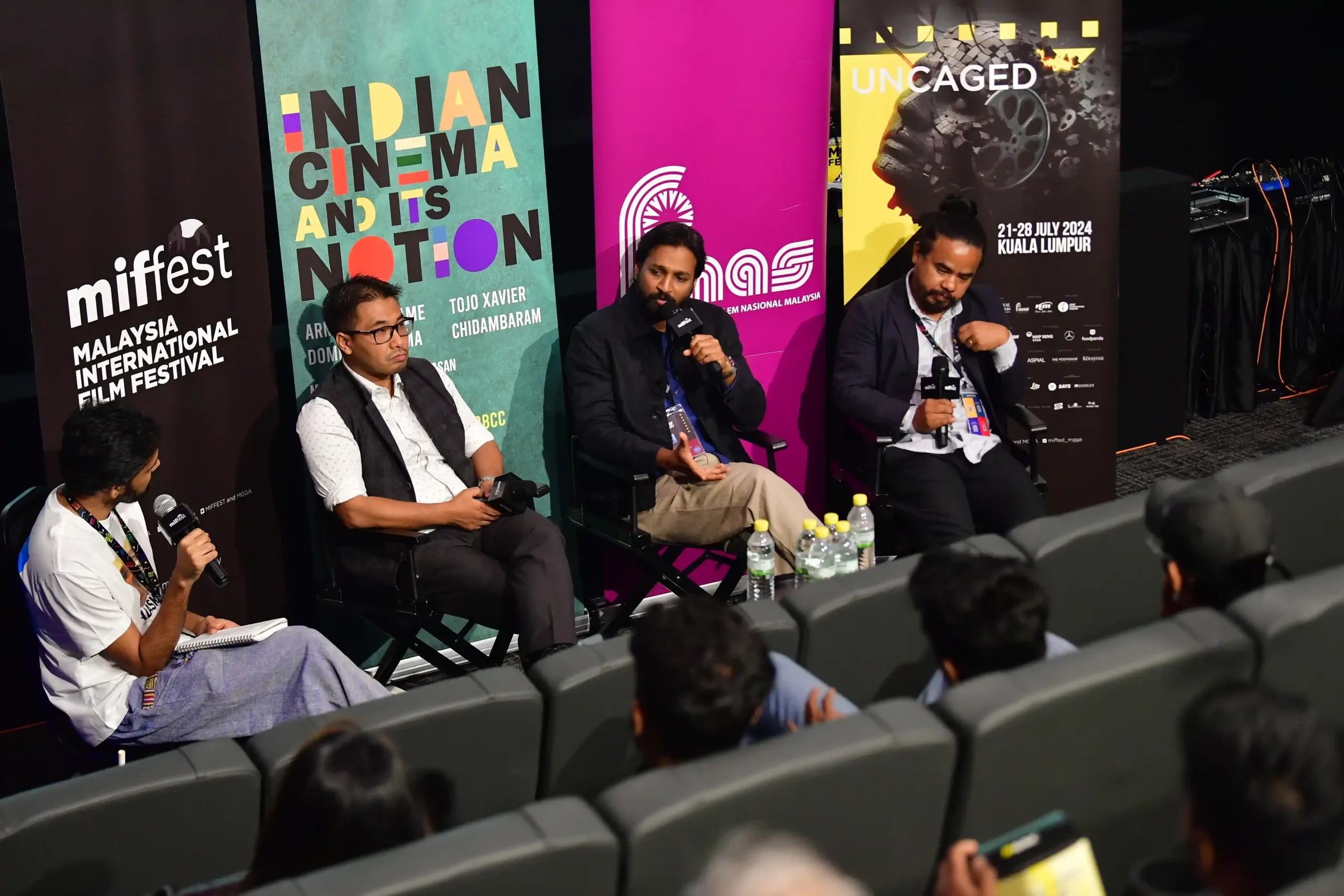
Lena Srinivasan, Armstrong Pame, Tojo Xavier and Dominic Sangma.
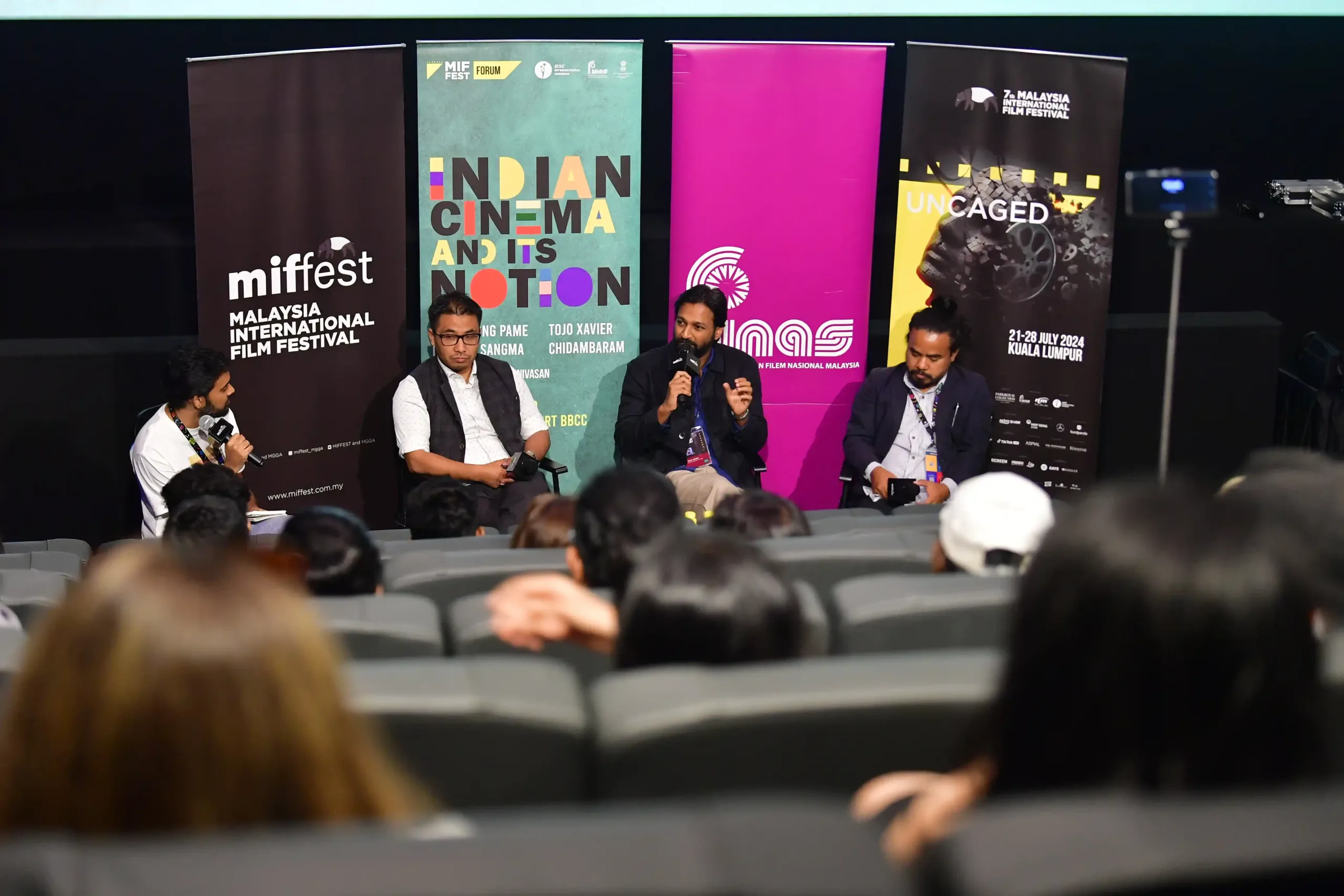
Lena Srinivasan, Armstrong Pame, Tojo Xavier and Dominic Sangma.
The Global Potential of Indian Regional Cinema
The resurgence of regional cinema in India is both a reflection of the country’s vast cultural diversity and its readiness to tell more localised stories on a global stage. With filmmakers like Satyajit Ray and modern auteurs pushing the boundaries of storytelling, regional cinema is no longer confined to the fringes of the Indian film industry. Its increasing international popularity underscores its power to resonate with audiences through authentic, deeply rooted narratives.









